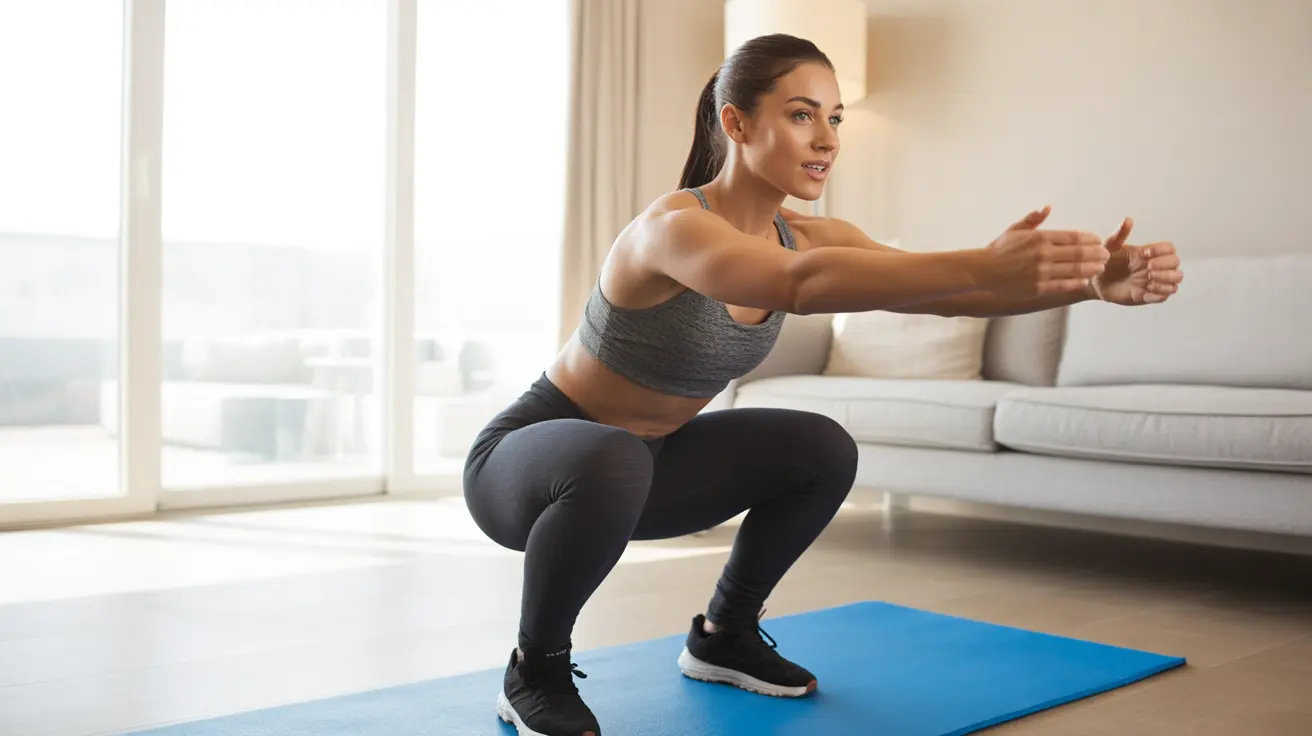Starting an at-home workout routine can transform your fitness journey, offering convenience, flexibility, and remarkable results without expensive equipment. Whether you're a beginner or looking to enhance your current fitness level, bodyweight exercises provide a solid foundation for strength, endurance, and overall health improvement.
This comprehensive guide will walk you through everything you need to know about creating and maintaining an effective at-home workout routine, from basic movements to progression strategies and safety considerations.
Getting Started: Essential Bodyweight Exercises
The most effective at-home workouts begin with mastering fundamental bodyweight exercises that target multiple muscle groups. Here are the core movements to incorporate into your routine:
Upper Body Fundamentals
- Push-ups (standard, knee, or wall variations)
- Dips using sturdy furniture
- Pike push-ups
- Diamond push-ups
Lower Body Basics
- Bodyweight squats
- Lunges (forward and reverse)
- Calf raises
- Glute bridges
Core Strengthening
- Planks
- Mountain climbers
- Bird dogs
- Dead bugs
Creating Your Workout Space
A successful at-home workout routine requires minimal but intentional setup. Clear a space approximately 6x6 feet to move freely. Ensure you have:
- A non-slip exercise mat
- Good ventilation
- Proper lighting
- A clear area free from hazards
Progressive Training: From Beginner to Advanced
Advancing your at-home workouts requires strategic progression. Start with basic movements and gradually increase difficulty through:
Volume Progression
- Increase repetitions
- Add sets
- Reduce rest periods
Exercise Variations
- Modify movement angles
- Increase range of motion
- Add isometric holds
Benefits of Regular At-Home Workouts
Consistent bodyweight training at home offers numerous advantages:
- Time efficiency
- Cost-effectiveness
- Improved strength and flexibility
- Enhanced body awareness
- Reduced stress levels
- Better posture
- Increased metabolic rate
Safety and Form Guidelines
Maintaining proper form is crucial for preventing injuries and maximizing results. Key considerations include:
- Warm up thoroughly before each session
- Maintain neutral spine alignment
- Control movement speed
- Listen to your body's signals
- Rest adequately between workouts
Frequently Asked Questions
- What are the best bodyweight exercises for beginners to do at home without equipment?
The best beginner bodyweight exercises include standard push-ups (or modified knee push-ups), bodyweight squats, lunges, planks, and glute bridges. These movements build foundational strength while teaching proper form and body control.
- How can I safely progress my at-home workouts from beginner to advanced levels?
Progress gradually by first mastering proper form, then increasing repetitions and sets. Once comfortable, introduce more challenging variations, reduce rest periods, and incorporate compound movements. Always maintain control and proper technique when advancing.
- What are the key benefits of doing bodyweight workouts at home regularly?
Regular bodyweight workouts improve strength, flexibility, and cardiovascular fitness while building lean muscle mass. They also enhance body awareness, save time and money, and can be done anywhere without equipment.
- How much space and what setup do I need for effective and safe at-home workouts?
A clear area of approximately 6x6 feet is sufficient for most bodyweight exercises. Essential items include a non-slip exercise mat, good lighting, and adequate ventilation. Ensure the space is free from obstacles and has a stable floor surface.
- What are common mistakes to avoid to prevent injury during at-home bodyweight training?
Common mistakes include skipping warm-ups, rushing through movements, using poor form, progressing too quickly, and not allowing adequate rest between sessions. Always focus on quality over quantity and listen to your body's signals.




